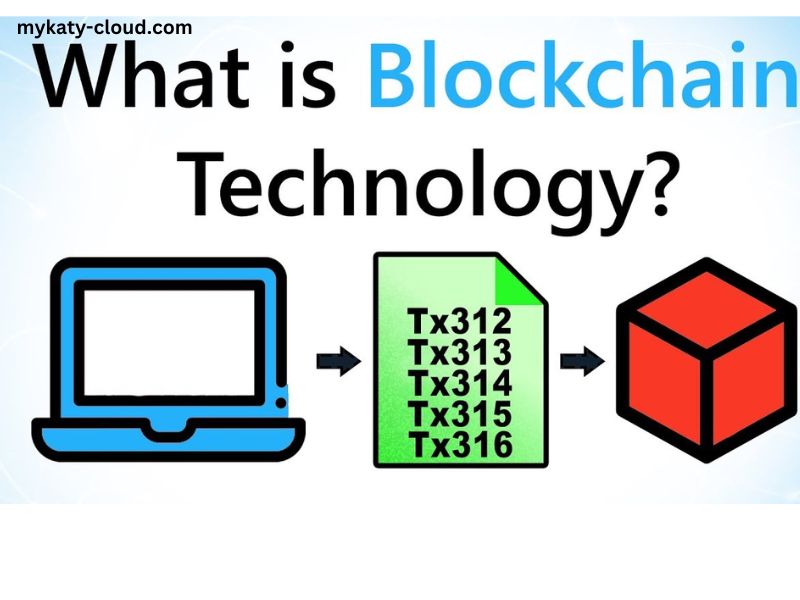In recent years, blockchain technology has emerged as one of the most revolutionary innovations in the digital world. From its humble beginnings in supporting cryptocurrencies like Bitcoin to its current applications across various industries, blockchain technology is transforming the way we think about data security, transparency, and decentralized systems. But what exactly is blockchain technology, and why is it garnering so much attention? This article delves into the fundamentals of blockchain technology, its underlying mechanisms, and its broad range of applications.
Understanding Blockchain Technology
At its core, a blockchain is a distributed ledger technology that maintains a secure and immutable record of transactions across a network of computers. Unlike traditional centralized databases managed by a single entity, a blockchain operates on a decentralized network where multiple participants, known as nodes, validate and record transactions.
1. Structure of a Blockchain
A blockchain is composed of a chain of blocks, each containing a list of transactions. Each block is linked to the previous block through a cryptographic hash, forming a continuous chain. The structure of a block typically includes:
- Header: Contains metadata about the block, including a timestamp, a reference to the previous block’s hash, and a unique identifier for the block itself.
- Transaction List: Records the details of all transactions included in the block.
- Hash: A unique digital fingerprint generated by applying a cryptographic hash function to the block’s data, ensuring its integrity.
2. Decentralization and Distributed Ledger
Unlike traditional centralized databases, where a single authority controls the data, blockchain operates on a decentralized network of nodes. Each node maintains a copy of the entire blockchain, ensuring that no single entity has control over the data. This distributed ledger approach enhances transparency and reduces the risk of data tampering or single points of failure.
3. Consensus Mechanisms
To validate and agree on the state of the blockchain, nodes use consensus mechanisms. These mechanisms ensure that all participants in the network agree on the validity of transactions and the order in which they are added to the blockchain. Common consensus mechanisms include:
- Proof of Work (PoW): Nodes, known as miners, compete to solve complex mathematical puzzles. The first to solve the puzzle gets to add a new block to the blockchain and is rewarded with cryptocurrency. This mechanism is used in Bitcoin.
- Proof of Stake (PoS): Validators are chosen to create new blocks based on the number of coins they hold and are willing to “stake” as collateral. PoS is used in various cryptocurrencies like Ethereum 2.0.
- Delegated Proof of Stake (DPoS): Stakeholders elect a small number of delegates who are responsible for validating transactions and creating blocks. This approach is used in platforms like EOS.
Key Features of Blockchain Technology
Blockchain technology is characterized by several key features that contribute to its security, transparency, and efficiency.
1. Immutability
Once a block is added to the blockchain, its data cannot be altered or deleted. This immutability is achieved through cryptographic hashing, where each block’s hash depends on the data of the previous block. Any attempt to change the data in a block would require recalculating the hashes of all subsequent blocks, making tampering virtually impossible.
2. Transparency
Blockchain technology enhances transparency by allowing all participants in the network to access and view the entire blockchain. This transparency fosters trust among participants and enables easy auditing of transactions.
3. Security
Blockchain technology employs cryptographic techniques to secure data and transactions. Each transaction is digitally signed using cryptographic keys, and the decentralized nature of the network ensures that no single entity has control over the data, reducing the risk of hacks and fraud.
4. Decentralization
The decentralized nature of blockchain eliminates the need for intermediaries, such as banks or payment processors, in transactions. This decentralization reduces costs, speeds up transactions, and increases overall efficiency.
Applications of Blockchain Technology
Blockchain technology has far-reaching applications beyond its initial use in cryptocurrencies. Here are some of the most notable areas where blockchain is making an impact:
1. Financial Services
- Cryptocurrencies: The most well-known application of blockchain technology is cryptocurrencies like Bitcoin and Ethereum. These digital currencies operate on blockchain networks, enabling peer-to-peer transactions without the need for intermediaries.
- Smart Contracts: Smart contracts are self-executing contracts with the terms of the agreement directly written into code. They automatically enforce and execute the terms of the contract once predefined conditions are met. Smart contracts are used in various blockchain platforms like Ethereum and have applications in areas such as insurance, real estate, and supply chain management.
2. Supply Chain Management
Blockchain technology enhances supply chain transparency and traceability by providing a tamper-proof record of the movement of goods from the manufacturer to the end consumer. Companies can track products at each stage of the supply chain, ensuring authenticity and reducing fraud.
3. Healthcare
In healthcare, blockchain can be used to securely store and share patient records, ensuring data privacy and interoperability between different healthcare providers. Blockchain can also help in tracking the provenance of pharmaceuticals, reducing counterfeiting and ensuring drug safety.
4. Voting Systems
Blockchain technology has the potential to revolutionize voting systems by providing a secure and transparent method for casting and counting votes. Blockchain-based voting can reduce the risk of election fraud and increase voter trust in the electoral process.
5. Intellectual Property
Blockchain can be used to register and manage intellectual property rights, such as patents, copyrights, and trademarks. By providing a transparent and immutable record of ownership and transfer, blockchain helps protect intellectual property and prevent unauthorized use.
6. Real Estate
In real estate, blockchain technology can streamline property transactions by providing a secure and transparent record of ownership and transfers. It can also facilitate the creation of digital property titles and reduce the need for intermediaries, such as real estate agents and lawyers.
Challenges and Future of Blockchain Technology
Despite its numerous advantages, blockchain technology faces several challenges that need to be addressed for widespread adoption:
1. Scalability
As the number of transactions on a blockchain network increases, so does the size of the blockchain and the computational power required to process transactions. Scaling blockchain networks to handle large volumes of transactions efficiently remains a significant challenge.
2. Energy Consumption
Consensus mechanisms like Proof of Work require substantial computational power, resulting in high energy consumption. This environmental impact has raised concerns about the sustainability of blockchain technology, prompting the development of more energy-efficient consensus mechanisms like Proof of Stake.
3. Regulation and Compliance
The decentralized and pseudonymous nature of blockchain technology poses regulatory challenges, particularly in areas like financial transactions and data privacy. Governments and regulatory bodies are working to develop frameworks that balance innovation with compliance and security.
4. Interoperability
Blockchain networks often operate in isolation, leading to challenges in integrating and exchanging data between different blockchain platforms. Efforts are underway to develop interoperability solutions that enable seamless communication and collaboration between disparate blockchain networks.
Conclusion
Blockchain technology represents a paradigm shift in how we approach data security, transparency, and decentralized systems. Its applications extend far beyond cryptocurrencies, with potential use cases spanning finance, supply chain management, healthcare, voting, intellectual property, and real estate. As the technology continues to evolve and overcome its challenges, blockchain has the potential to drive innovation and reshape industries in profound ways.
The future of blockchain technology holds promise, with ongoing research and development aimed at addressing scalability, energy consumption, regulation, and interoperability. As blockchain technology matures, it is poised to become an integral part of the digital landscape, unlocking new possibilities and transforming the way we interact with data and transactions.



